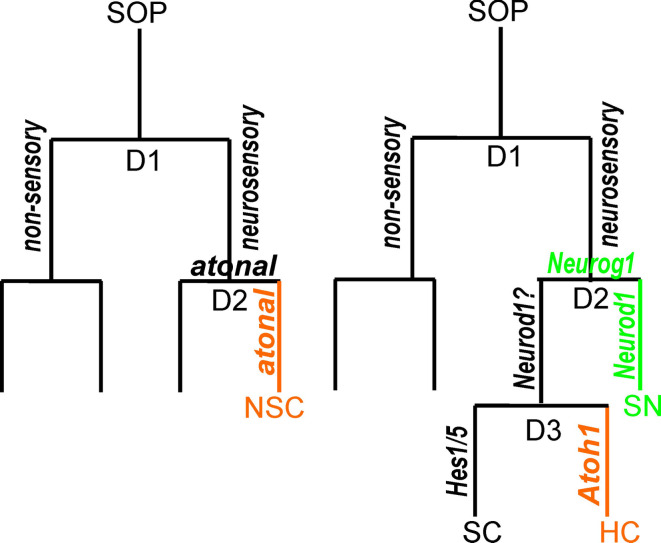Fig. 3.
The known development of a fly cutaneous mechanosensor (left) and a hypothetical mammalian neurosensory development (right). A fly cutaneous mechanosensor forms through two divisions (D1, D2) out of a sense organ precursor (SOP). It is hypothesized that fly chordotonal organs follow the same principle with the exception that atonal is driving the differentiation of the neurosensory cell (NSC) and possibly also supports the second division. A similar generalized scheme seems to underlie mammalian ear development. A hypothetical module that starts with a sensory mother cell (referred to as neurosensory precursor cell in Fig. 1) undergoes a division to give rise to neurosensory and nonsensory precursors. The second division (D2) leads to upregulation of Neurog1 followed by upregulation of NeuroD1 to differentiate a sensory neuron. A third division of the sensory precursor cell will give rise to two cells that differentiate under the influence of the bHLH genes Atoh1 and Hes1/5 into hair cells (HC) and supporting cells (SC), respectively. As indicated in Fig. 1, this model may apply only to a restricted aspect of mammalian ear development (modified from references [9, 20])

